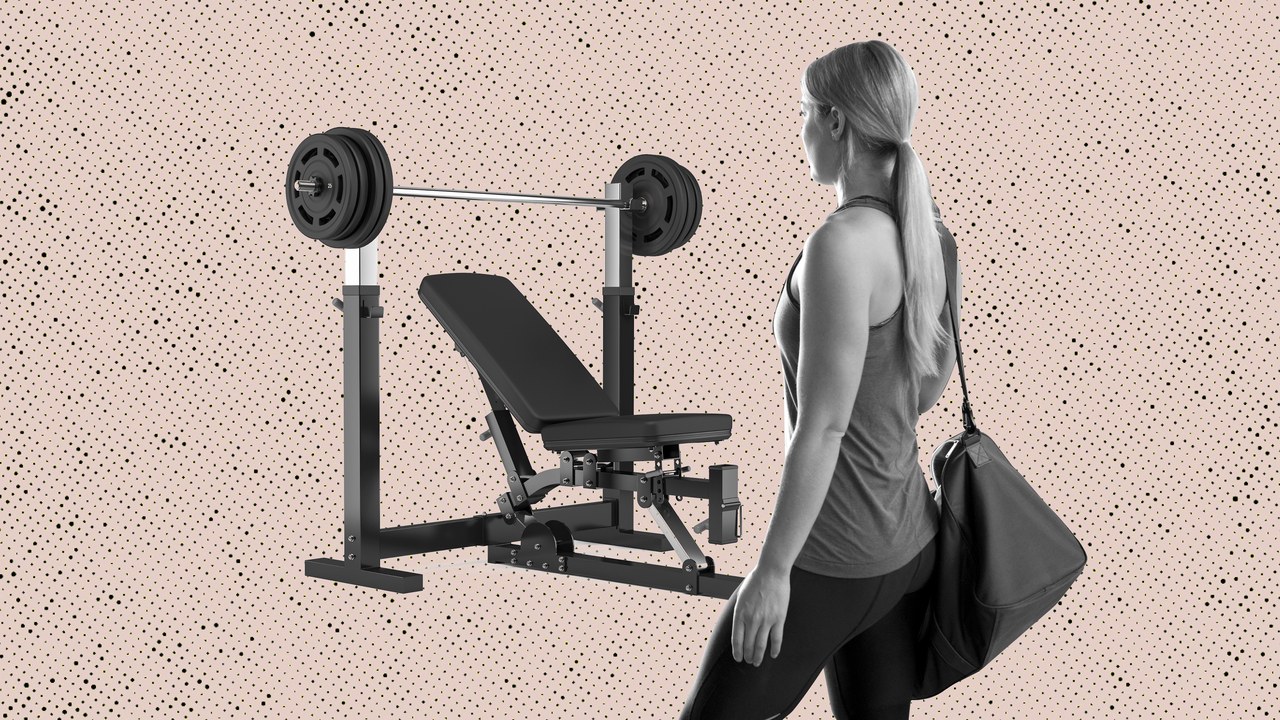A Gender Gap at the Gym Is Keeping Women From Working Out

Growing up, Sayeeda Chowdhury, 24, never thought of herself as an athlete. She developed an aversion to the gym young, when classmates stared at the “Muslim girl modifications” to her PE uniform. “I hoped I could find the courage to go to the cardio room one day, but never imagined going into the weight room filled with testosterone and people staring,” says Chowdhury.
But that didn’t stop her from admiring strong female athletes. One day, watching a powerlifting video posted by a woman in her medical school class, she couldn’t help herself: “#goals,” she commented.
To her surprise, the woman invited her to come to the gym to learn to lift. With encouragement, Chowdhury kept coming back, gaining confidence on top of strength. “I stopped caring about who was watching me,” she says. She was hooked, and today she’s a powerlifter in her own right.
Chowdhury definitely isn’t the only woman to feel a sense of gym intimidation—if you’ve ever set foot in a bro-y weight room and suddenly felt like everyone was judging you, you know the feeling. But it’s not just a matter of making women self-conscious: Researchers argue experiences like this contribute to a gender gap in physical activity levels that harms women’s health.
Globally, women are less likely than men to get enough exercise: 57 percent of men ages 18 and over meet recommended aerobic activity levels, versus 49 percent of women, according to CDC data. When it comes to the number of people who meet guidelines for both aerobic and muscle strengthening activity, the gap widens. (Further marginalized groups have it even worse—in a recent study, young Black women were the least likely group to report any physical activity, and given the discriminatory policies trans and non-binary people face in sport and gym environments, experts suspect their exercise participation rates are even lower.)
In my six years as a personal trainer, I’ve seen this firsthand. It’s more than a personal frustration—it’s a serious health equity issue. Research tells us that regular exercise is one of the most powerful things a person can do to reduce their risk of developing chronic disease: It lowers the risk of hypertension, heart disease, stroke, diabetes, and numerous types of cancer. Exercise is also beneficial for mental health, and helps to build and maintain bone density, a concern especially relevant for women who are at greater risk for osteoporosis.
Just like the wage gap, the gender gap at the gym robs women of a better future.
So what’s responsible for the gym gap? The answer is complex, but a major factor is that active spaces are plagued by gender-specific deterrents that encourage women to stay on the sidelines.
For starters, women are more likely than men to experience weight stigma, which can discourage women from going to the gym (and even the doctor’s office.) Then there’s the issue of harassment—as in most public spaces, women’s experiences in gyms and on hiking trails and running routes are often marred by harassment. While running in a busy park in Salt Lake City, Shauna North, 26, was followed by a man in his car. He would park, watch her run past, drive up ahead, and park to watch her run by again. Later during that same run, she was whistled at by two more men, separately, as they drove by. Over 40 percent of women experience harassment while running, according to a 2017 Runner’s World poll. North was so shaken by her experience, she gave up on the idea of running a half marathon, afraid of what might happen on training runs after work. “If the same thing were to happen to me at night with no people around, I don’t know what the outcome would have been,” she says.
